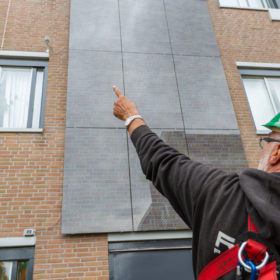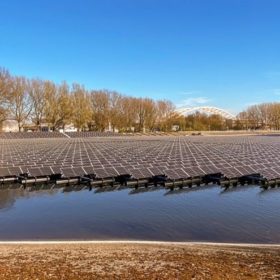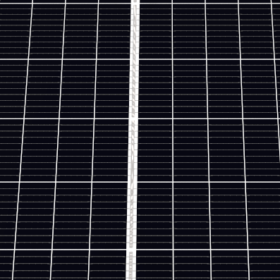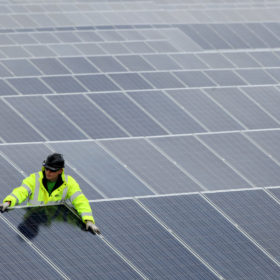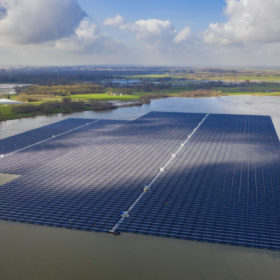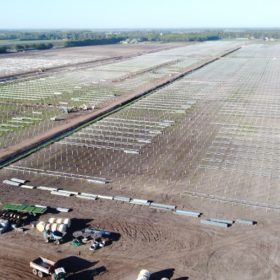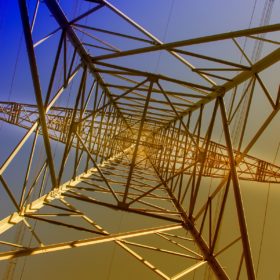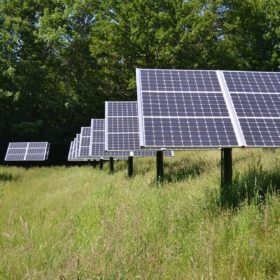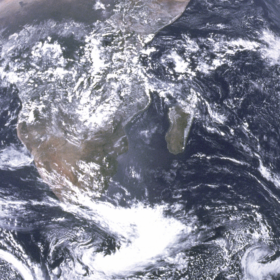Facade solar panels with ‘mimic design’
Dutch startup Solar Visuals and the Netherlands Organisation for Applied Scientific Research (TNO) have developed new “mimic design” facade modules that reproduce the features of building surfaces. Lenneke Slooff-Hoek, a senior scientist for TNO, told pv magazine that the panels can be made in any size or color at 13% efficiency, adding that they have a partly transparent colored layer made of small dots.
Another floating solar park goes online in the Netherlands
Dutch water supplier Evides Waterbedrijf has commissioned a 1.6 MW floating PV plant at one of its facilities near Rotterdam. It is now considering the construction of more floating solar plants on three other reservoirs, including a 350-hectare water surface.
IBC back-contact solar roof for electric vehicles
Dutch EV start-up Lightyear is already producing prototype roofs to extend the range of its Lightyear One solar car. The roofs will feature interdigitated back contact solar cells made by U.S. company SunPower and backsheets from Dutch multinational DSM.
Autarco unveils rooftop module series
The Dutch PV system provider’s MHI panels feature multi-busbar technology and 120 half-cut, monocrystalline cells. The series has a power output of 355-375 W and efficiency of 19.2-20.3%.
Anesco builds two solar parks in Netherlands
Anesco is making its international debut with two more major projects for Shell New Energies – its first endeavor outside the UK. The two solar parks in the Netherlands will have a combined capacity of 26 MW. Anesco previously partnered with Shell New Energies on a battery storage project in the UK.
Baywa’s plans for floating PV
Over the past two years, German renewables business Baywa re has developed in-house floating solar technology and installed nearly 50 MW of projects in the Netherlands. Benoît Roux, director of solar activities at Baywa re in France, said the ramp-up in project size has enabled the company to achieve dramatic cost reductions.
Work begins on two PV facilities totaling 146 MW in the Netherlands
Chint Solar Netherlands and Powerfield began construction of two new solar parks in the Netherlands. The Stadskanaal and Buinerveen Solar Parks follow the companies’ 103 MW Midden-Groningen Solar Park, now in operation.
Dutch grid operators won’t have to compensate for deactivated solar rooftops
Minister of economic affairs and climate change, Eric Wiebes, has written to parliament to confirm grid companies do not have to pay PV system owners when their installations are disconnected from the network due to capacity issues or poor-quality voltage.
Solar parks may have better biodiversity impact than intensive monoculture farming
A research project in the Netherlands is seeking to assess the impact of large scale PV projects on soil quality and biodiversity. Principal scientist Wim Sinke, of Dutch research center TNO, says well-designed and operated and maintained solar parks could prove to have better outcomes than monoculture farming.
Covid-19 weekly round-up: US job losses raise concern but France and China continued to add new solar
Cell supply shortages could kick-start manufacturing activity in India, EV car sales are braced for a fall while still gaining market share and a new date has been set for the world’s biggest solar trade show.
